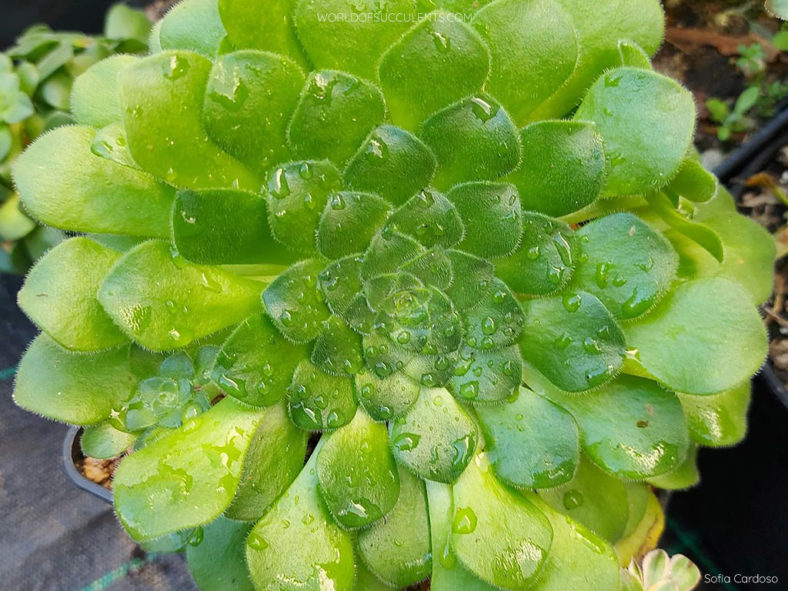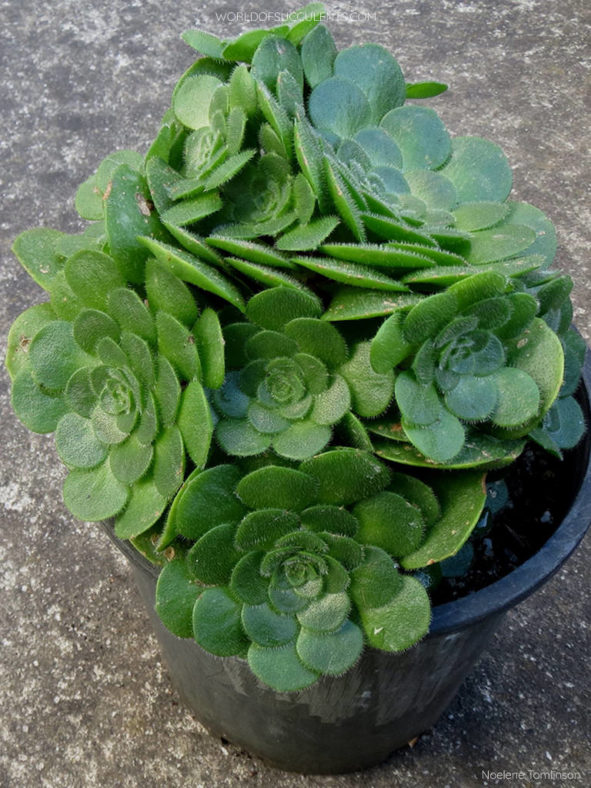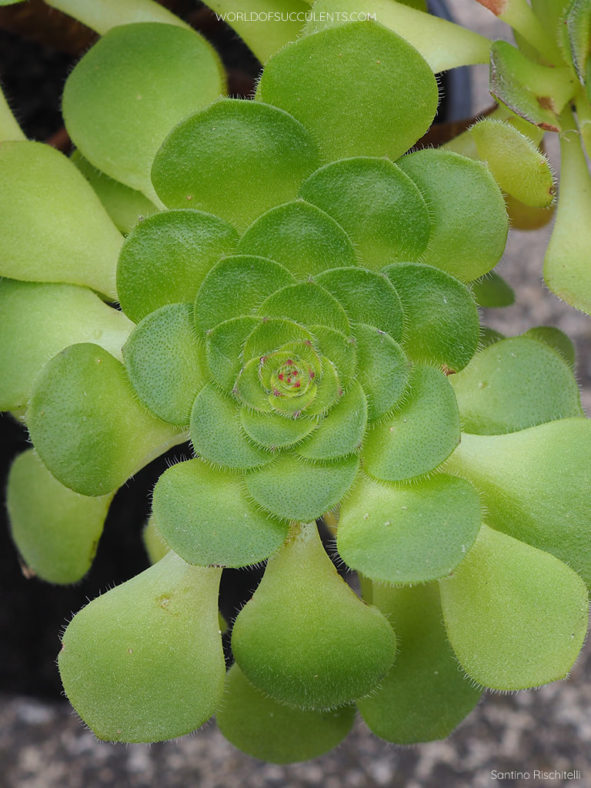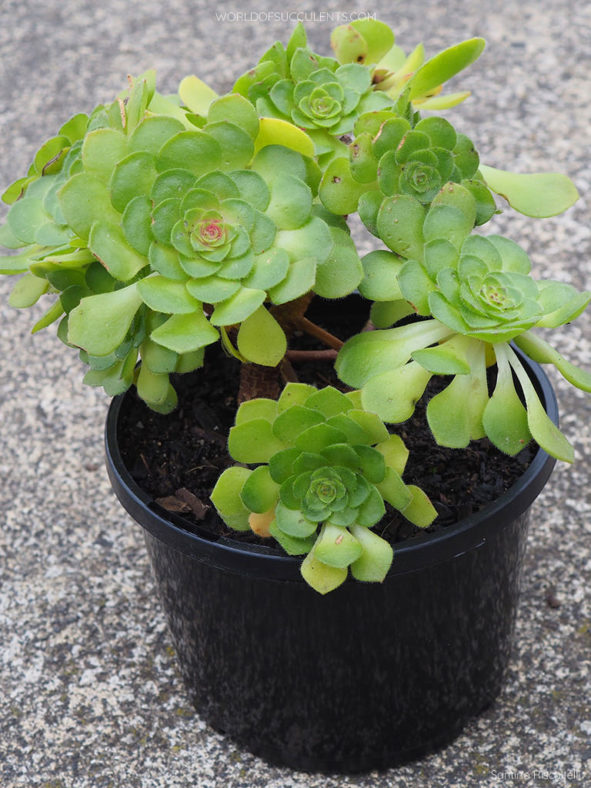Scientific Name
Aeonium ×anagense P.V.Heath
Synonym(s)
Aeonium ×anagensis, Aeonium 'Green Star', Aeonium 'Pancakes'
Scientific Classification
Family: Crassulaceae
Subfamily: Sempervivoideae
Tribe: Aeonieae
Genus: Aeonium
Etymology
The specific epithet "anagense (an-uh-GEN-see)" means "of or from Anaga" and refers to Macizo de Anaga, a mountain range in northeastern Tenerife where Aeonium ×anagense was discovered.
Origin
Aeonium ×anagense is a natural hybrid that results from a cross between Aeonium lindleyi and Aeonium tabuliforme. It occurs on rocks by the coast below Taganana in the northeast of Tenerife, Canary Islands, at elevations of about 1,480 feet (450 m).
Description
Aeonium ×anagense, also known as Aeonium 'Pancakes', is a small, shrubby succulent with a slender, upright stem and few bare branches that terminate in flat rosettes of green, velvety, overlapping leaves. It can grow up to 8 inches (20 cm) tall. The leaves are spoon-shaped and can measure up to 2 inches (5 cm) long and 1 inch (2.5 cm) wide. They are fleshy, covered with short, soft hair, and have margins lined with mixed long and short cilia.
The flowers are pale yellow, star-shaped, and appear in lax inflorescences in spring.
This hybrid resembles Aeonium tabuliforme but has a different growth habit and less dense, much smaller rosettes.

How to Grow and Care for Aeonium ×anagense
Light: A. ×anagense grows best in full sun to partial shade. Indoors, give it bright indirect light as much as possible. A leggy, stretched plant is a sign of not getting enough light.
Soil: While most succulents do well when planted in a potting mix specifically formulated for succulents, sandy loam or regular potting mix amended with perlite is better for A. ×anagense because it requires some more moisture.
Temperature: This succulent does not like hot or dry weather and may go dormant in summer. It prefers temperatures between 65 and 75 °F (18 and 24 °C). A. ×anagense can withstand temperatures as low as 30 °F (-1.1 °C). USDA Plant Hardiness Zones 10a to 11b, 30 to 50 °F (-1.1 to 10 °C).
Watering: A. ×anagense requires more water than most succulents, but too much moisture can cause root rot. In spring and fall, water the plant thoroughly, then allow the soil to dry out before watering again. Water more sparingly in winter. The plant does not need to be watered during its summer dormancy except in arid conditions.
Fertilizing: Feed your plant during the growing season with a half-strength balanced fertilizer once a month. Do not feed A. ×anagense when it is dormant in the summer months.
Repotting: If growing A. ×anagense in a container, repot every two to three years with fresh potting soil. Choose a container with drainage holes to avoid standing water and root rot.
Propagation: This succulent is very easy to propagate from cuttings. The best time to take cuttings is spring. Allow the cut end to dry for several days before placing it in the soil.
Learn more at How to Grow and Care for Aeonium.
Toxicity of Aeonium ×anagense
A. ×anagense is non-toxic to humans and animals.
Links
- Back to genus Aeonium
- Succupedia: Browse succulents by Scientific Name, Common Name, Genus, Family, USDA Hardiness Zone, Origin, or cacti by Genus
Photo Gallery
Click on a photo to see a larger version.


